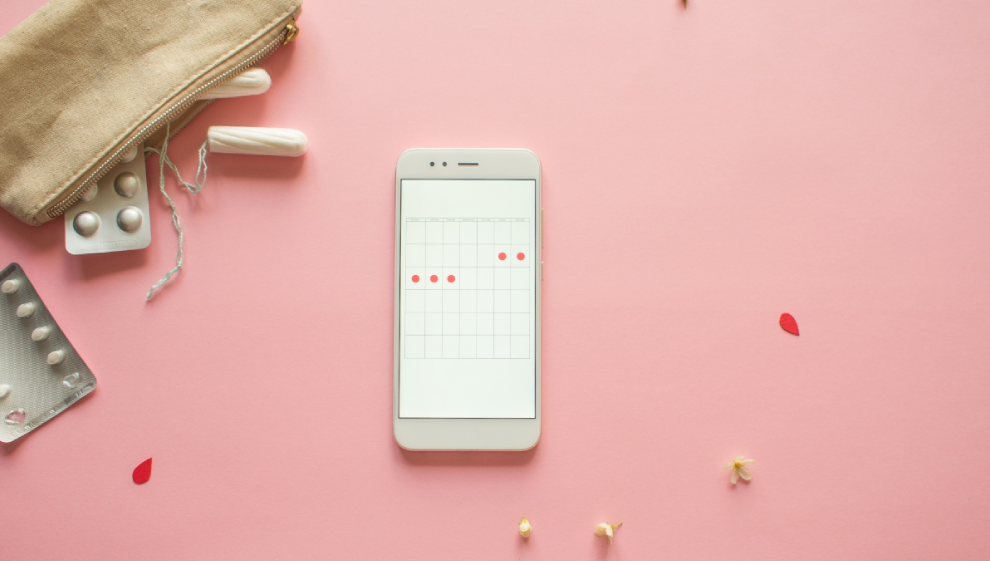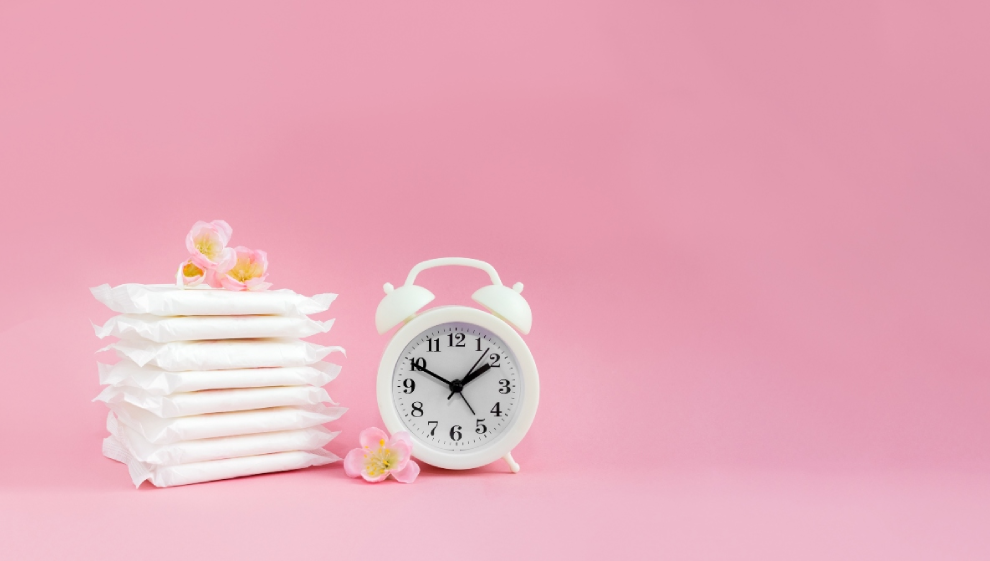Menstrual cycle tracking | How to track your period and why it's important
- Overview
Exploring the benefits of menstrual cycle and period tracking helps you better understand the timing of ovulation and menstruation, giving you a biological backing for fluctuating moods, changes to your sex drive, and the timing of your period.
In this article, we delve into the methods you can use to track your period, giving you plenty of options to find what works best for you.
The menstrual cycle at a glance

The menstrual cycle is a monthly hormonal process that prepares the female body for pregnancy. It typically lasts around 28 days, although variations to time and duration are very common.
The menstrual cycle consists of different phases: the menstrual phase (bleeding), follicular phase, ovulation, and luteal phase.
Tracking your cycle can help you identify patterns and biological behaviours that are unique to you.
Building a profile over the course of a few cycles allows you to track the impact of certain lifestyle factors to give you a better understanding of your unique menstrual profile.
How to track your period

The basics of tracking your period are easy. If you are using a manual method, take your calendar and note the start date (the first day you notice bleeding) and end date (the day bleeding ceases) whilst describing the flow heaviness of your period for each day during menstruation.
If you are using an app on your phone, you can shop around until you find an option that works for you.
Whether you’re trying to conceive or minimise things that could affect it, tracking your period can help with plotting the rest of your cycle.
It’s good to collect as much information as you can during this time as this can help you spot trends and fluctuations in mood, energy, appetite, and sex drive.
What information should I be collecting?
Collecting as much data as possible helps give you a well-rounded picture of what affects your menstrual cycle most and how your body reacts to certain internal and external stimuli. Recording everything from mood fluctuations to energy levels also means you can look back in the future to assess how lifestyle changes may have affected your cycle.
Take a look below for some suggestions of what to record if you’re looking for a bit more detail.
- Physical symptoms – in detail, expand on the physical symptoms you may be experiencing
- Changes to your body – this may include things like bloating, cramps, headaches and fatigue
- Quality of sleep – use a red, amber and green marker to indicate sleep quality
- Mental health fluctuations – detail any changes to your mood and interest in social activity
- Daily basal body temperature (BBT) – fluctuations in body temperature can be an indicator of a negative reaction to lifestyle influences or something biological
- Changes in cervical fluid – tracking changes to the amount, type and consistency of any fluid can all provide an insight for healthcare professionals in the future
- Exercise and performance – if you’re an active individual, tracking changes to your performance and recovery can help you correctly time exercise for maximum results
Tracking an irregular period
An irregular cycle is generally defined as one that deviates from the typical 28-day pattern, either in length, frequency, or bleeding intensity. Factors such as stress, changes in weight, travel routine, illness, or underlying health conditions like polycystic ovary syndrome (PCOS) can all contribute to these fluctuations.
For women with an irregular cycle, period tracking becomes an essential tool for not only predicting menstruation, but for identifying patterns that a professional can use to potentially spot the signs of an underlying health issue or condition.
Over time, the data you've collected will highlight certain trends and abnormalities that empower you to take control of your reproductive health with greater precision and confidence. It can be harder to predict the start and end of your menstrual phases, but consistently recording symptoms like spotting, mood changes, or physical discomfort can provide your healthcare provider with some valuable insights into why you might be experiencing an irregular cycle.
What are the benefits of tracking your period?
If you aren’t aware of the benefits of tracking your period cycle, you may be accepting the negative symptoms associated with it without making sensible lifestyle adjustments to help minimise pain and discomfort. Using the information from tracking your cycle can help improve comfort and minimise negative symptoms during your monthly period.
When you’re tracking, we advise getting as much information as possible. This allows you to look back and see exactly what is having the biggest influence on your cycle when you do your three-month review. The key areas we recommend you focus on at first are nutrition and diet, sleep quality, your stress level and exercise.
The benefits of tracking include:
- Giving you a better understanding of mood fluctuations
- Knowing roughly when you will begin menstruating every month
- Helping to pinpoint ovulation for getting pregnant
- Giving you more control over the symptoms you typically experience
- Getting a bigger picture of how menstruation works as part of your whole cycle
- Understanding changes to your sex drive
- Maximising exercise and recovery during menstruation
How to review your data
For example, if you notice that your energy levels fluctuate drastically while you are menstruating, adjusting the time at which you exercise could have a drastic effect on your body’s ability to recover the day after.
The same advice applies if you notice positive emotional or physical trends. Tracking is designed to maximise your wellbeing during your cycle. Getting as much data as possible helps you build a wide profile so you can better understand what is having the biggest effect on your menstrual cycle.
What method is best for tracking your period?
We recommend using whichever method works best for you in terms of lifestyle, equipment availability, personal preference, and likelihood of consistency. You can keep it as simple as tracking your cycle using a pen and paper, or, if you want to collect as much data as possible, you can go into detail using an app or spreadsheet.
If you are a high-level athlete, there are versions of menstrual cycle trackers which have been specifically designed for female athletes and active women. These applications help eliminate any dominant lifestyle choices from your tracking log for a more tailored and accurate user experience.
What apps are best?
Apps are a great way to track your period because they're quick and easy to access on the move. You can log thoughts, feelings, and changes to your mood on top of logging physical changes like spotting and bleeding.
See our list below for some great apps that can help make period tracking easy:
Help with fertility tracking

If you and your partner are looking to conceive, utilising period cycle tracking to monitor your ovulation window is essential.
Because you ovulate about 12 to 14 days before the start of a new menstrual cycle, knowing the ins and outs of your menstrual cycle allows you to pinpoint the time at which you are most fertile.
The fertile window roughly refers to the five days leading up to ovulation, the day of ovulation and the day after ovulation.
This means that if your menstrual cycle was the typical 28 days, you would ovulate on or around day 14, making your fertility window would be on days 9, 10, 11, 12, 13, 14 and 15.
When to seek medical advice
We recommend tracking your periods over a 3-month period to get a detailed profile that highlights fluctuations and common trends. If you notice any abnormalities or persisting symptoms, you may need to contact your GP, gynaecologist, or similar healthcare professional.
These symptoms and abnormalities may include:
- An absence of your period
- Irregular cycles
- Severe or abnormal pain
- Bleeding between cycles
- Premenstrual syndrome (PMS)
- Heavy or uncommon bleeding
Last updated Thursday 12 September 2024
First published on Monday 24 July 2023

